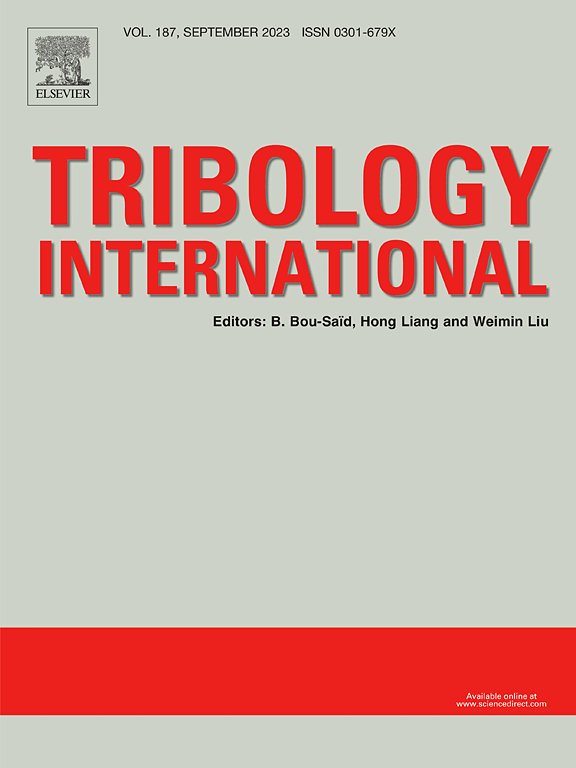润滑接触界面中表面粗糙度增强的微放电
IF 6.1
1区 工程技术
Q1 ENGINEERING, MECHANICAL
引用次数: 0
摘要
电致轴承损坏(EIBD)是受电场影响的机械元件润滑界面的重大挑战,特别是在电池电动汽车(bev)、插电式混合动力汽车(phev)和风力涡轮机等应用中。当穿过非导电润滑膜的电场超过其介电强度时,就会发生放电,导致机器元件的表面损坏。表面凹凸不平会放大局部电场,导致弹性流体动力润滑(EHL)最小膜厚对应区域出现微尺度放电和微点蚀。本研究探讨了凹凸不平对局部电场的影响,并引入了一个场增强参数来量化各种凹凸不平几何形状的影响,包括半球形、半圆柱形、双曲面尖端、双曲叶片和二维正弦波浪面。分析结果表明,在膜厚一定的情况下,增强效果与尖头曲率半径密切相关,且随着曲率半径的增大,增强效果逐渐减小。所提出的方法有助于有效地预测已知粗糙特性的电击穿电压,为了解EIBD的性质提供有价值的见解,有助于设计在高电场下工作的可靠润滑系统。本文章由计算机程序翻译,如有差异,请以英文原文为准。
Surface asperity-enhanced micro electrical discharge in lubricated contact interfaces
Electrically induced bearing damage (EIBD) is a significant challenge to lubricated interfaces in machine elements subjected to electric fields, particularly for applications like battery electric vehicles (BEVs), plug-in hybrid electric vehicles (PHEVs), and wind turbines. When the electric field across a non-conducting lubricant film exceeds its dielectric strength, electrical discharges occur, causing surface damage to machine elements. Surface asperities amplify the local electric field, leading to microscale discharges and micro-pitting in the areas corresponding to the minimum film thickness within the elastohydrodynamic lubrication (EHL) regime. This study investigates the effect of asperities on local electric fields and introduces a field enhancement parameter to quantify the influence of various asperity geometries, including hemispheres, semicylinders, hyperboloid tips, hyperbolic blades, and two-dimensional sinusoidal wavy surfaces. The analysis results indicate that for a given film thickness, the enhancement effect is strongly dependent on the radius of curvature of the asperity tip, and that as the radius increases, the enhancement effect reduces and diminishes. The proposed method helps effectively predict the electrical-breakdown voltage for known asperity characteristics, offering valuable insights into the nature of EIBD, useful for the design of reliable lubricated systems working under high electric fields.
求助全文
通过发布文献求助,成功后即可免费获取论文全文。
去求助
来源期刊

Tribology International
工程技术-工程:机械
CiteScore
10.10
自引率
16.10%
发文量
627
审稿时长
35 days
期刊介绍:
Tribology is the science of rubbing surfaces and contributes to every facet of our everyday life, from live cell friction to engine lubrication and seismology. As such tribology is truly multidisciplinary and this extraordinary breadth of scientific interest is reflected in the scope of Tribology International.
Tribology International seeks to publish original research papers of the highest scientific quality to provide an archival resource for scientists from all backgrounds. Written contributions are invited reporting experimental and modelling studies both in established areas of tribology and emerging fields. Scientific topics include the physics or chemistry of tribo-surfaces, bio-tribology, surface engineering and materials, contact mechanics, nano-tribology, lubricants and hydrodynamic lubrication.
 求助内容:
求助内容: 应助结果提醒方式:
应助结果提醒方式:


